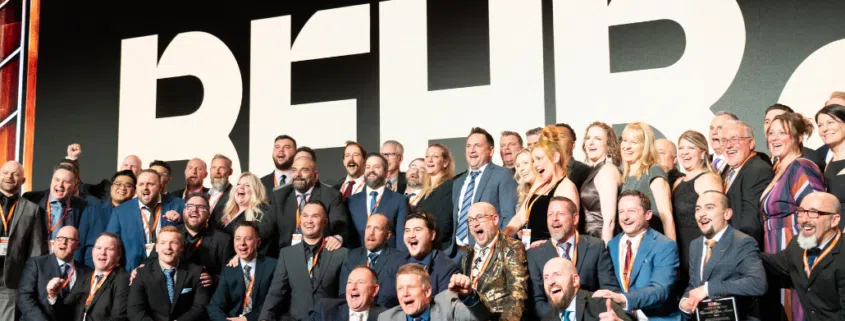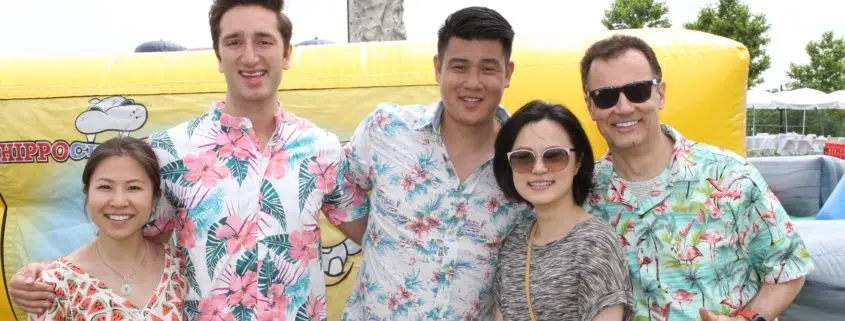Maximizing the Impact of Multigenerational Meetings for HR
Guide
Today’s workforce is a dynamic mix of generations, each bringing unique skills and perspectives.
This diversity is a powerful asset, but it also presents a challenge for HR professionals: how do we create meetings that resonate with everyone?
Multigenerational gatherings offer incredible opportunities for collaboration, knowledge sharing, and building a stronger, more inclusive company culture.
This guide provides practical strategies for maximizing the impact of your multigenerational meetings.

Defining the “Why” and Knowing Your Audience
Before diving into logistics, it’s crucial to define the “why” behind your meeting. What specific goals do you hope to achieve? Your goal might involve onboarding new employees, facilitating team building, or communicating policy changes. Clearly articulating the value proposition for each generation will significantly increase employee engagement.
What are some key objectives you aim to achieve through multigenerational meetings?
For HR, multigenerational meetings are great for sharing knowledge between experienced and newer employees, improving communication and teamwork, boosting morale by making everyone feel included, building a stronger company culture, and planning for the future by identifying and mentoring future leaders. They’re also useful for onboarding and training. Basically, they’re good for everyone.
Intergenerational meetings are invaluable for HR to:
- Facilitate knowledge transfer between experienced and newer employees.
- Improve communication and teamwork across generations.
- Boost morale and create a sense of inclusion.
- Build a stronger and more cohesive company culture.
- Develop future leaders through mentorship and reverse mentoring opportunities.
- Enhance onboarding and training programs.
Understanding your audience is paramount. This means going beyond age ranges to understand the specific characteristics, communication styles, and motivations of each generation present in your workplace. Learn more about understanding generational differences and bridging them through this article from SHRM.
Case Study
BEHR Paints’ multigenerational meeting involving over 1,000 employees utilized varying types of engagement and meetings to speak to each generation and member of their team effectively. The multiday meeting incorporated traditional style sessions, as well as outdoor excursion team building and networking through social events and meals. At this meeting, multigenerational communication was paramount and encouraged by the varying styles of meetings and activities.
Gathering Information:
Surveys: Pre-meeting surveys are invaluable for collecting demographic data, understanding communication preferences, assessing tech comfort levels, and identifying individual learning styles.
Focus Groups: For deeper insights, consider conducting focus groups with representatives from different generations. This allows for a more nuanced understanding of their expectations and needs.
Pre-Meeting Communication: Build excitement and foster a sense of community before the meeting. Share relevant materials, introduce speakers, and create online forums for attendees to connect beforehand.
Analyzing Demographics
Identify the dominant generations participating and research their general characteristics. While avoiding stereotypes is essential, understanding generational trends can inform your planning for a multigenerational workplace.
Tailoring Your Meeting Strategy
Content and Delivery
When discussing content and delivery, variety is the spice of life. Incorporate a mix of formats to cater to diverse learning styles and preferences within your multigenerational teams. Think beyond traditional presentations. Consider interactive workshops, panel discussions, case study analyses, and even gamified activities.
And don’t forget to use technology. Utilize technology strategically to enhance engagement and accessibility in your multigenerational workplace. Be mindful of varying tech comfort levels. Offer tech support and consider providing options for those less familiar with certain platforms. This ensures generational differences at work are accounted for, and needs arising from them are met.
Finally, relevancy is key. Ensure the content is relevant and resonates with the diverse interests and professional levels of your attendees. For HR meetings, focus on benefits, career development, and company culture.
Interactive stuff at meetings, especially for mixed generations, can be tricky but super effective. Team challenges, workshops, icebreakers, and panels are all great options. Balance tech use by offering low-tech alternatives and providing tech support.
Case Study
Kinecta united their team with a Superhero theme for their staff summit. By using a theme that transcends generations, they were able to bring colleagues from different ages together and bond over a common element. This staff summit also included a luncheon with casino games and themed activities such as a superhero meet-n-greet, comic photo booth and team themed costumes.
Logistics and Environment
First, make sure your location and event is accessible for everyone attending. Cater to the physical needs of all attendees, including seating arrangements, lighting, and accommodations for disabilities. The venue location itself should be accessible (otherwise provide transportation). The building should also be accessible with ADA approved access. There are apps like Aira Access Events that offer on-demand visual interpreting services. Closed captions, interpreters and other inclusive efforts matter at meetings.
Inclusivity is key, as highlighted in our guide to accessible meetings. Represent different generations in speakers and activities, use inclusive language, and offer a quiet area. Create a welcoming and respectful atmosphere where everyone feels comfortable participating.
Proactively address potential conflicts arising from differing communication styles or work ethics within your multigenerational workplace. Offer convenient breaks and be sure to cater to diverse dietary needs. We have a great guide on catering for business meetings to assist you as well as a guide on managing dietary restrictions at events.
Be mindful of budget constraints and explore cost-effective strategies for implementing your plans. Prioritize must-haves and look for cost-effective alternatives.
Case Studies
AltaMed’s all-hands meeting used the Shrine Auditorium as a venue due to its accessibility and layout. They also fostered open workplace communication through collaborative breakout sessions and team meals throughout the day. Their menu, too, accounted for dietary needs and restrictions. Utilizing the data gathered during registration, AltaMed was able to cater to its wider, multigenerational audience.
Another Example of Inclusivity
Samsung held a company picnic to show appreciation to their staff. By offering low-impact activities alongside high-impact ones created a perfect balance for guests of all abilities. Their picnic also served to cross barriers between tiers in the company. Management joined in on the fun, fostering a workplace culture of collaboration.
Hybrid Meeting Considerations
For hybrid meetings, ensure remote participants feel fully included and have equal opportunities to contribute. Utilize breakout rooms, interactive whiteboards, and dedicated online moderators to facilitate engagement.
Gamification of material can be highly effect way to engage and ensure meeting points are retained. In fact, we use this method regularly in our virtual events. Anything can be gamified from networking to polls to Easter egg scavenger hunts. Add a leadership board for added value.
Fostering Interaction and Engagement
There are three things to remember in fostering interaction and engagement: 1, Communication Styles, 2, Collaboration, and 3, Networking.
Adapt your communication methods to suit different generational preferences. Be mindful of both verbal and non-verbal cues. For collaboration, design activities that encourage intergenerational collaboration and knowledge sharing. Create opportunities for mentorship and reverse mentoring. And when it comes to networking, provide structured networking activities that cater to different comfort levels. Offer a variety of options, from speed networking to smaller, more intimate group discussions.
Offer small group discussions for introverts and larger receptions or gamified networking for extroverts. Provide both quiet and lively spaces.
Case Study
See how Nike Running utilized varying activities to cater to both introverts and extroverts, regardless of age. So, too, did this event provide loads of networking and collaboration opportunities. Between lawn games and outdoor activities like paddleboarding, this event had something to offer for everyone and bridged the gap between generations.
Evaluation and Follow-Up
Now your meeting is over. Congratulations, but the work does not end here. In fact, it is just the beginning for your next event. Use this time to gather feedback. Collect post-meeting evaluations to assess the effectiveness of your meeting and identify areas for improvement.
Don’t stop there, be sure to use this feedback in implementing changes for your next meeting. What worked well? What fell short? What did people like most? When did they leave? Use this information to refine your future meeting strategies.
The most effective meetings don’t stop engagement after the event ends. Extend the impact of the meeting. Share key takeaways, create online communities for continued discussion, and assign follow-up tasks.
Turn connections into action with clear goals, post-event follow-up, shared online spaces, and tracking of progress.
Conclusion
Planning successful multigenerational meetings requires careful consideration of the diverse needs and preferences of your attendees. By embracing inclusivity, fostering collaboration, and adapting your strategies, you can create meetings that are not only engaging but also truly valuable for everyone involved. This will contribute to a more connected, innovative, and productive workplace.

Contact Our Meeting Planners
Read More
Nationwide Locations
Los Angeles, CA
San Francisco, CA
Las Vegas, NV
Dallas/Fort Worth, TX
Chicago, IL
Miami, FL
New York, NY
Latest Projects
2025 Event Solutions
BEHR’s 2025 ConferenceMay 30, 2025 - 5:49 pm2024 Event Solutions
Video Game Product Launch PartyOctober 22, 2024 - 2:57 pm- San Bernardino County Employees’ 2024 Summer PicnicJuly 11, 2024 - 2:55 pm
Best of the Best
- NBA 2K Launch PartyNovember 2, 2022 - 6:57 pm
- NEOM Gala & ConferenceSeptember 29, 2022 - 7:02 pm
- Premium Energy Drink Company Gets Employees Hyped UpJuly 25, 2022 - 8:49 pm
Resources
 2019-2020ROR and Its Importance in Corporate EventsMay 30, 2025 - 3:30 pm
2019-2020ROR and Its Importance in Corporate EventsMay 30, 2025 - 3:30 pm Multigenerational Meetings for HRMarch 4, 2025 - 7:54 am
Multigenerational Meetings for HRMarch 4, 2025 - 7:54 am Best Holiday Party Venues in the Bay AreaOctober 23, 2024 - 12:00 pm
Best Holiday Party Venues in the Bay AreaOctober 23, 2024 - 12:00 pm








 2019-2020
2019-2020